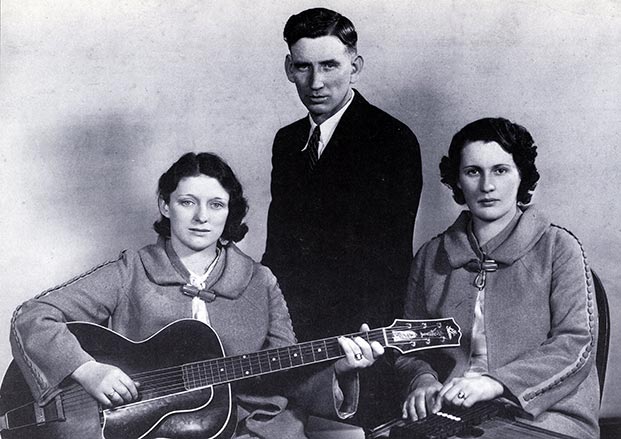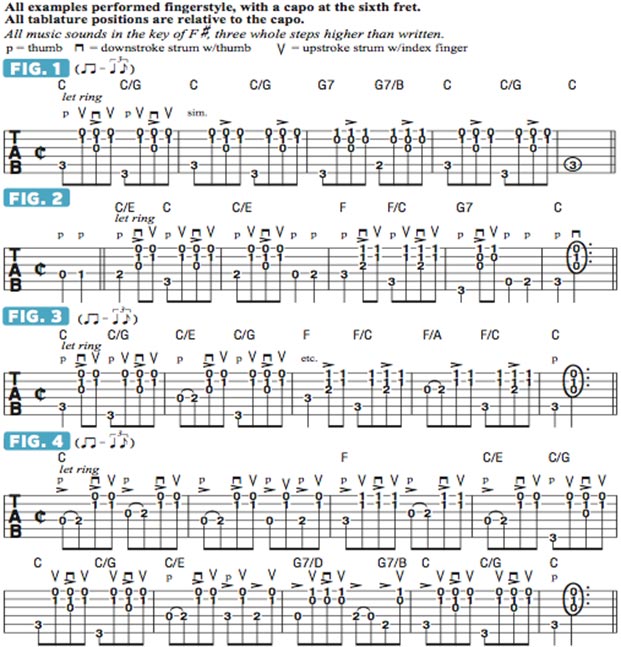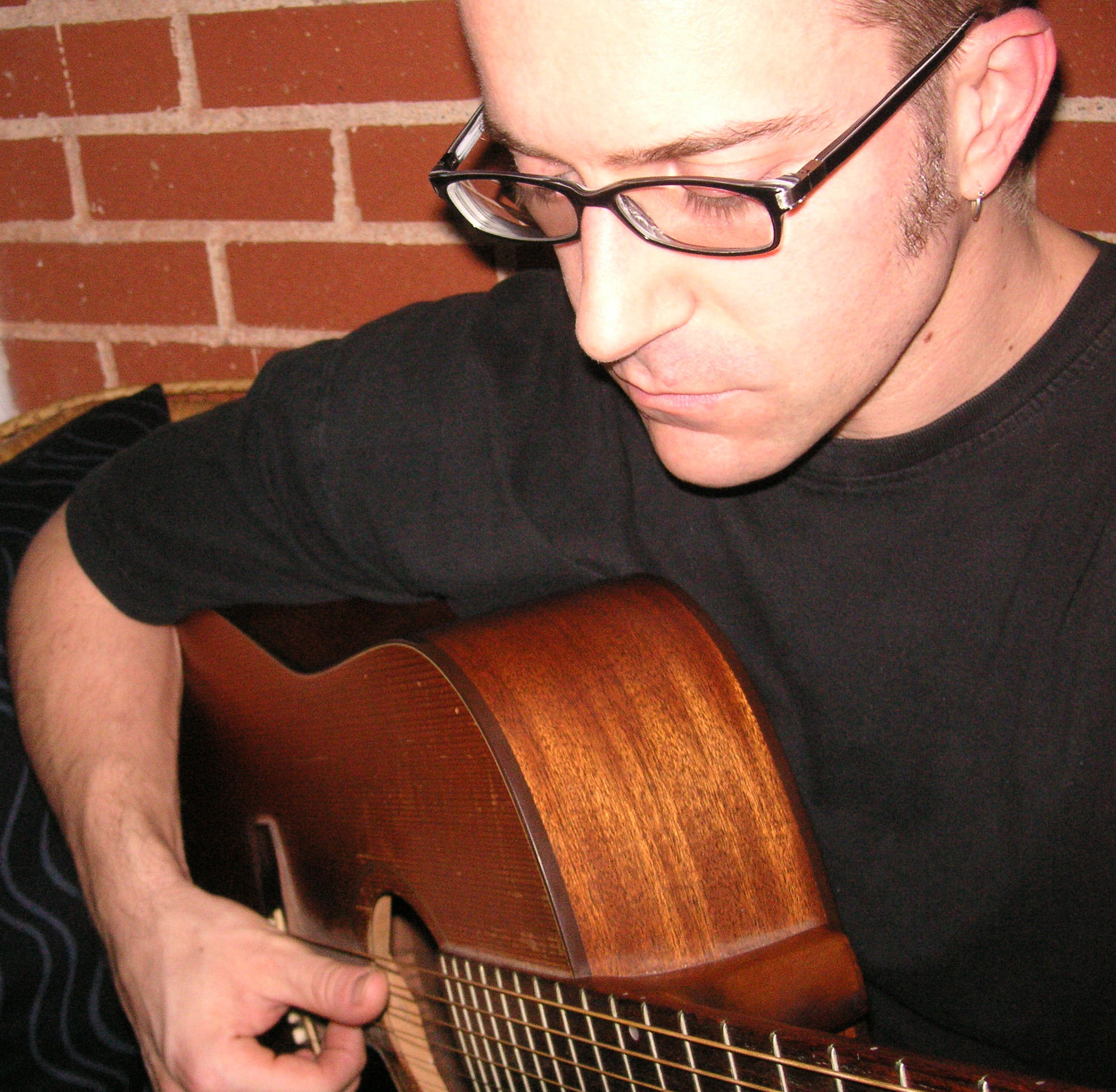The Influential Strumming Techniques of Maybelle Carter

Maybelle Carter (1909–1978) was the musical backbone of country music’s first “superstar” vocal group, the Carter Family, an act perhaps best known for (of the 300-plus songs they recorded) “Can the Circle Be Unbroken,” “Bury Me Under the Weeping Willow Tree” and “Wildwood Flower.”
In their unique brand of “mountain gospel music,” Maybelle sang harmony and played distinctly ornate guitar parts on her 1928 Gibson L-5 archtop acoustic, seamlessly weaving together walking bass lines, chord strums and fills/melody.
Her sound became a group trademark, and by the late Twenties, “Carter strumming” (a.k.a. “Carter Family picking” and the “Maybelle Carter scratch”) was one of the most emulated guitar styles in the United States, influencing Merle Travis, Chet Atkins, Doc Watson, Joan Baez, Clarence White and countless others. Originally a trio (1927–1944), with Maybelle’s sister Sara, and Sara’s husband A.P. Carter, later Carter Family incarnations included “Mother” Maybelle Carter’s children (among them, June Carter, whom later married Johnny Cash). Today they are collectively dubbed “The First Family of Country Music.”
Let’s examine Maybelle’s guitar mastery, as displayed throughout her showcase piece, “Wildwood Flower” (The Carter Family: 1927–1934, among other collections).
Maybelle Carter picked the strings with her index finger and thumb, affixed with fingerpicks, but bare fingers will suffice. She originally recorded “Wildwood Flower” with a capo at the sixth fret but in later years would move it to lower frets to suit her deepening vocal range. FIGURE 1 shows an introductory take on Carter’s technique, thumbing the “alternating” bass notes (usually the root and fifth; “slash chord” symbols above the tablature—C/G, G7/B—specify exact bass notes) and brushing higher strings with the index finger—like “scratching” an itch. Though the tablature shows “upstroke” strums sounding two strings and “downstrokes” hitting three, that type of precision is not critical; it’s merely a guideline to help mimic Carter’s sound—similar to strumming with a pick, where, generally, upstrokes naturally hit fewer strings than downstrokes.
FIGURE 2 focuses on the bass-line element of Carter’s approach, specifically the way she would “walk up ” or “walk down” from one chord to the next by ascending or descending through the notes of a related scale on the lower strings in a quarter-note rhythm, two beats before a chord change. This occurs at the end of bars 2 (approaching F) and 4 (approaching C), as well as the chromatic notes (notes moving in successive half steps, the distance of one fret), in the pick-up measure (the two notes leading into bar 1). Carter’s “alternating bass” technique is also involved in bar 3 (F/C).
Now let’s add some chord ornaments to the mix. In FIGURE 3, bars 2 and 4, we’re hitting an open string then hammering on to the second-fret note of a C or F chord. This Carter “chord embellishing” technique, when combined with alternating bass notes and strums, has since become a staple in effective “strummed” acoustic country guitar accompaniments.
Putting it all together, FIGURE 4 features eight bars of “Wildwood Flower”–inspired fun. Note that all “musical holes” are filled—no rests or held notes—resulting in constant eighth notes, as melody, chord strums, bass notes and other trademark Carter decorations seamlessly and beautifully interact.
Acoustic Nation October 2016 FIGURE 1
Acoustic Nation October 2016 FIGURE 2
Acoustic Nation October 2016 FIGURE 3
Acoustic Nation October 2016 FIGURE 4

Get The Pick Newsletter
All the latest guitar news, interviews, lessons, reviews, deals and more, direct to your inbox!
A singer-songwriter/multi-instrumentalist/film composer, Musician's Institute instructor, and author of 50+ transcription/instructional books, Dale Turner is also Guitar World's "Hole Notes"/"Acoustic Nation" columnist, and the former West Coast Editor of Guitar One magazine. Some of Dale’s old, weird, rare, and/or exotic instruments are featured in his score for WEEDS, the first animated short completed within the Filmmakers Co-op at Disney Feature Animation. His most recent CD, Mannerisms Magnified, was praised by Guitar Player magazine for its "Smart pop tunes that are crammed with interesting guitar parts and tones ... Like what the Beach Boys might do if they were on an acid trip that was on the verge of getting out of control. Yeah!"











